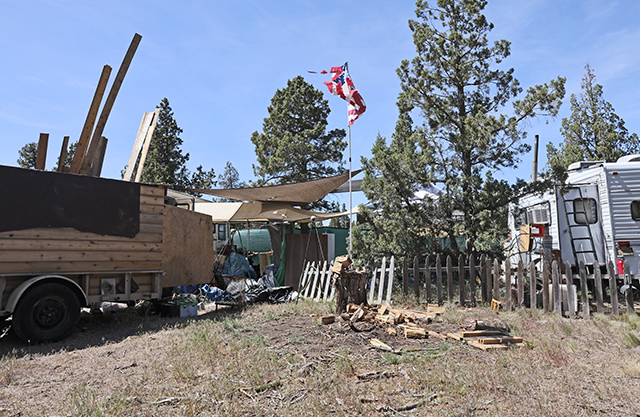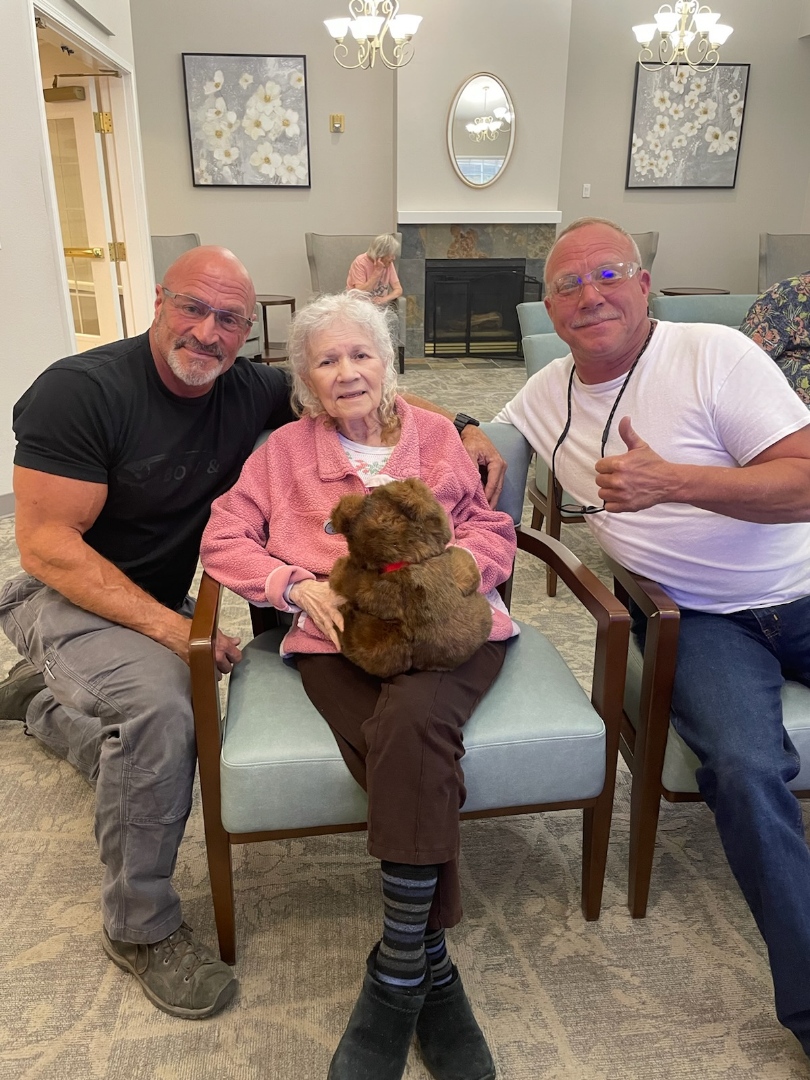Youths learn science of flight by flying helicopters at Bend Airport
Published 5:00 am Friday, August 7, 2020

- Chance Stevens, 12, practices his helicopter flying skills in a flight simulator with Nicole Orlich, director of flight school operations at Leading Edge Aviation, during a visit to the Bend Airport for part of Bend Science Station’s “Amazing Aviation” camp on Thursday, Aug. 6, 2020.
Tatum Bunting and Finley Lickwar barely spoke while flying in a highlighter-green helicopter, 900 feet above Bend on Wednesday afternoon. Because the doors of the Robinson R44 helicopter had been removed, the wind was so noisy that most attempts to speak were muffled anyway, even with headsets.
Their 15-minute flight was a physics lesson disguised as entertainment. But what a ride.
At one point, the 12-year-old Tatum and 14-year-old Finley flew over their houses. When Finley tried to point to a landmark, the gusts of wind prevented him from sticking his arm out the window.
Tatum gripped the seat in front of her to keep from falling out, but tight seat belts kept her, and Finley, firmly in the helicopter, which is typically used for tours.
The Old Mill District’s smokestacks and Central Oregon Community College’s campus looked like plastic toys from above. As pilot Greg Rembold flew alongside Pilot Butte, the landmark looked like an anthill.
“It was just crazy, all the wind in your hair,” said Tatum, an incoming sixth grader at Cascade Middle School. “I was gripping my glasses the entire time, but it was so cool and eye-opening.”
Tatum and Finley were among 10 students who flew in a helicopter and a small airplane as part of the “Amazing Aviation” day camp this week that was put on by the education nonprofit Bend Science Station. These trips — flown by Leading Edge Aviation pilots at Bend Municipal Airport — along with other indoor activities at Bend Science Station’s headquarters, were meant to teach students from sixth through ninth grade about the science of flight.
The flight experiences give students an opportunity to see how concepts like lift and air pressure apply to real-life flying, said Lisa Bermudez, head of development for Bend Science Station.
“It’s trying to put science into a real-world context,” she said.
Finley, an incoming ninth grader at Realms High School, said he appreciated getting to see first-hand Wednesday how to operate an aircraft. But he and Tatum both acknowledged how different the climate was flying above Bend. The wind made the helicopter so chilly that the pilot had to turn on the heater, despite it being a 70-degree afternoon in August.
“I couldn’t tell if I was shivering because I was cold or because of how high up we were,” Finley said.
The science lesson started before the flight. Rembold showed the students the cockpit controls before taking off, two to three kids at a time. And Nicole Orlich, Leading Edge Aviation’s director of flight school operations, explained to all the students how certain aspects of the helicopter help with airflow or measure wind speed before the flights began.
In order to prevent the spread of COVID-19, all campers and pilots wore face masks inside the helicopter and on airport grounds.
Bend Science Station has offered an aviation-themed camp with Leading Edge for over 10 years. The program is not only educational in terms of physics, but it also entices some teens to pursue a career in piloting, said Jack Walker, who oversees Leading Edge’s flight school.
“We like to foster the love of aviation at a young age,” he said. “The world changed a lot with COVID, but what hasn’t changed is the freedom of flight.”
Editor’s note: this article has been corrected. The original version misstated pilot Jack Walker’s first name and the number of years the program has operated. The Bulletin regrets the errors.






